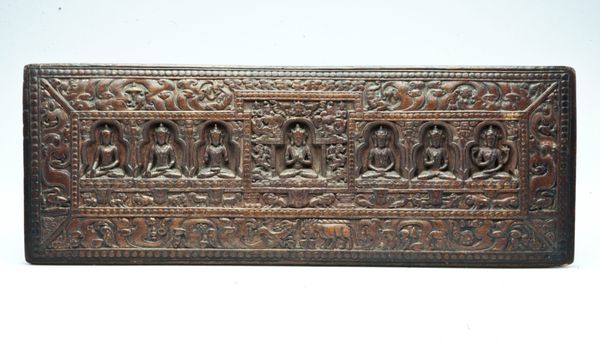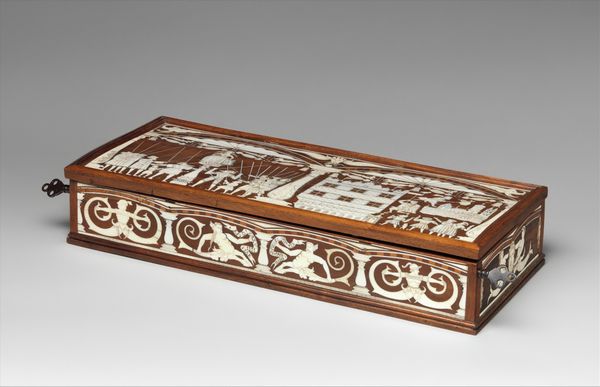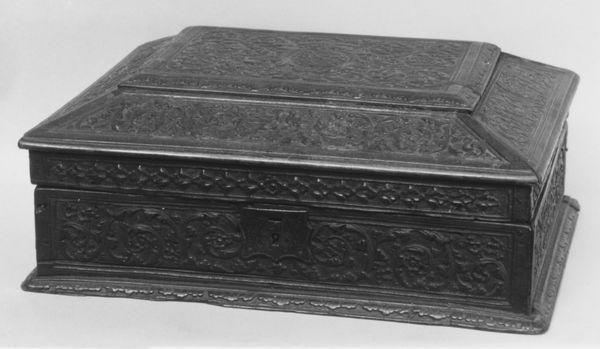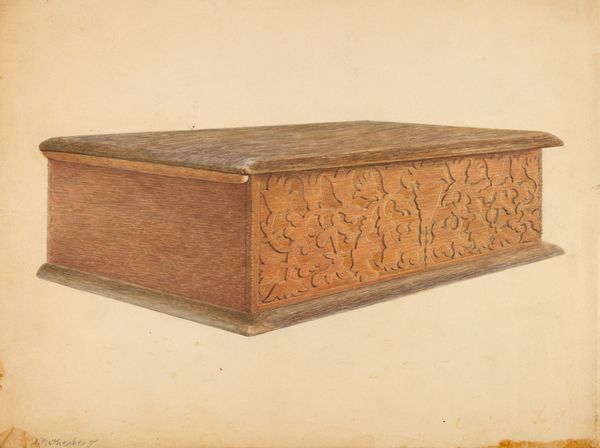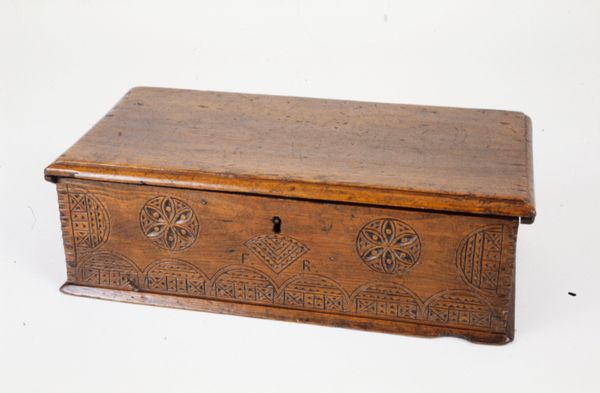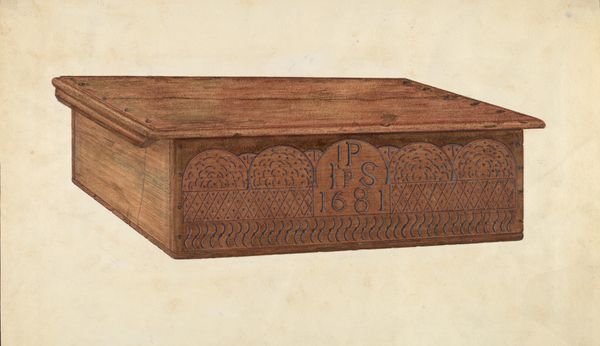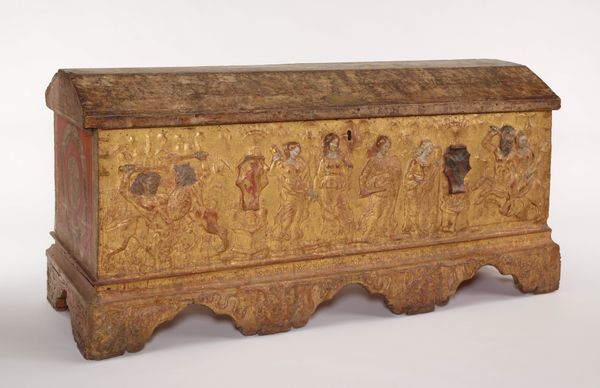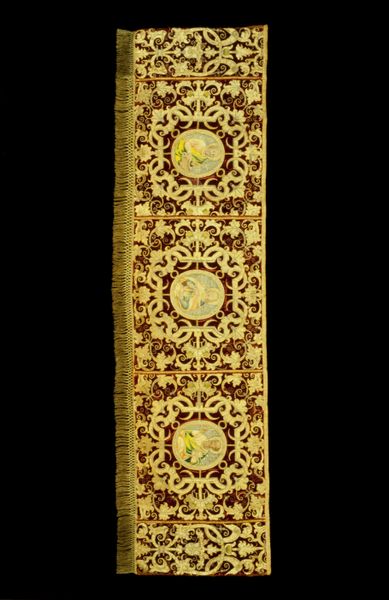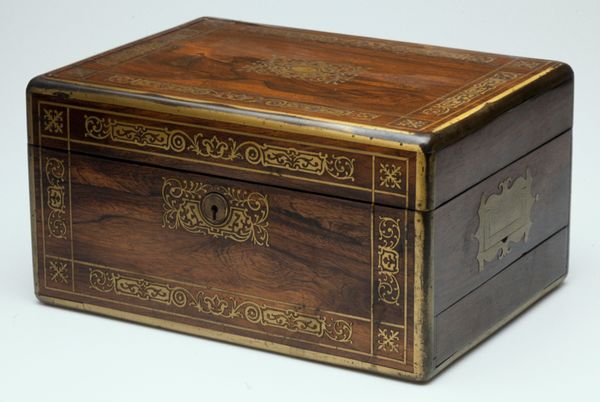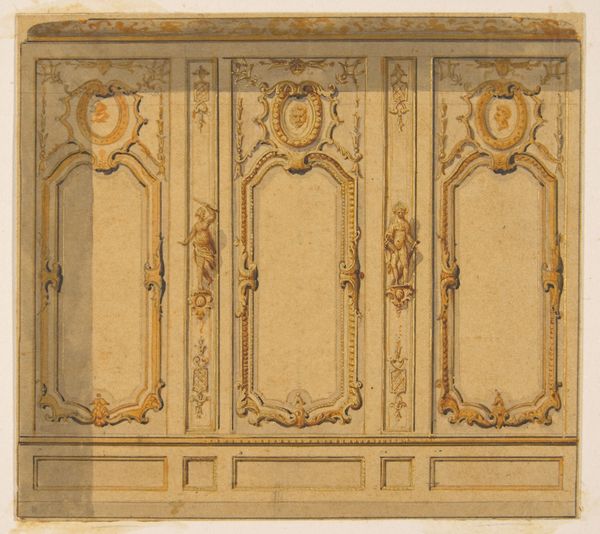
metal, wood
#
architectural landscape
#
metal
#
asian-art
#
mosaic
#
geometric pattern
#
wooden texture
#
wood
#
architectural
#
decorative-art
#
miniature
Dimensions: 5 9/16 x 26 7/16 x 7 9/16 in. (14.1 x 67.2 x 19.2 cm)
Copyright: Public Domain
This manuscript box, or ‘sadaik’, was made by an anonymous artist in Burma, today known as Myanmar. Boxes like this were used for storing important texts, often religious or legal documents that were written on palm leaves. In a culture where literacy was often confined to monastic and aristocratic elites, the box itself became a symbol of power and status. The gilded surface and ornate decorations suggest the box's owner was a person of considerable wealth and influence. The box is itself a kind of institution, preserving and protecting knowledge that was carefully controlled by the elites in Burmese society. We can learn more by researching the history of manuscript production and patronage in Burma, as well as studying the iconography and symbolism used in the box's decorations. Objects like this remind us that art is always embedded in a social and institutional context, and that its meaning is never fixed or universal.
Comments
minneapolisinstituteofart almost 2 years ago
⋮
Burmese Buddhist texts—carriers of Buddhist dharma, or teachings—and other religious manuscripts are considered sacred objects. They are stored in heavily embellished and gilded chests called sadaik, which, when displayed within the monastery, are often set on high ornamented stands. Lacquer molding, called thayo, typically decorates these boxes. With the Buddha in the center of this gallery, this box shares an ornamental style—molded and gilded surfaces studded with sparkling glass and mirrors—associated with the Mandalay region of central Burma, a style that persisted from the pre-colonial period (c. 1825) into the early 20th century.
Join the conversation
Join millions of artists and users on Artera today and experience the ultimate creative platform.


